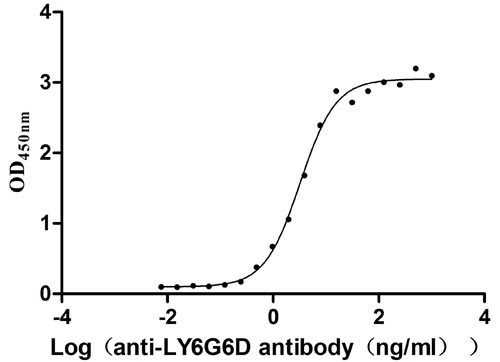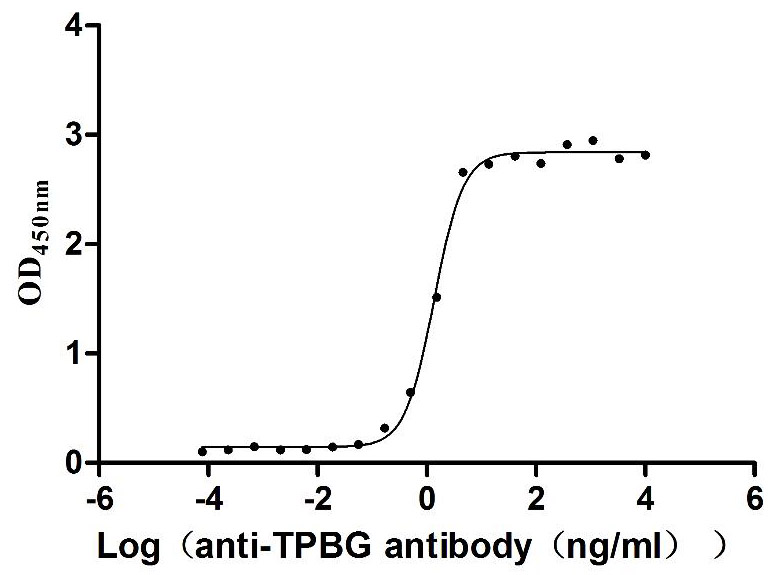Recombinant Mouse Urokinase plasminogen activator surface receptor (Plaur), partial
-
中文名稱:Recombinant Mouse Urokinase plasminogen activator surface receptor (Plaur), partial
-
貨號:CSB-MP018122MO
-
規格:¥684
-
圖片:
-
其他:
產品詳情
-
純度:Greater than 95% as determined by SDS-PAGE.
-
生物活性:Not Test
-
基因名:
-
Uniprot No.:
-
種屬:Mus musculus (Mouse)
-
蛋白長度:Partial
-
來源:Mammalian cell
-
分子量:58.8 kDa
-
表達區域:24-296aa
-
氨基酸序列LQCMQCESNQSCLVEECALGQDLCRTTVLREWQDDRELEVVTRGCAHSEKTNRTMSYRMGSMIISLTETVCATNLCNRPRPGARGRAFPQGRYLECASCTSLDQSCERGREQSLQCRYPTEHCIEVVTLQSTERSLKDEDYTRGCGSLPGCPGTAGFHSNQTFHFLKCCNYTHCNGGPVLDLQSFPPNGFQCYSCEGNNTLGCSSEEASLINCRGPMNQCLVATGLDVLGNRSYTVRGCATASWCQGSHVADSFPTHLNVSVSCCHGSGCNSP
Note: The complete sequence may include tag sequence, target protein sequence, linker sequence and extra sequence that is translated with the protein sequence for the purpose(s) of secretion, stability, solubility, etc.
If the exact amino acid sequence of this recombinant protein is critical to your application, please explicitly request the full and complete sequence of this protein before ordering. -
蛋白標簽:C-terminal hFc1-tagged
-
產品提供形式:Liquid or Lyophilized powder
Note: We will preferentially ship the format that we have in stock, however, if you have any special requirement for the format, please remark your requirement when placing the order, we will prepare according to your demand. -
緩沖液:If the delivery form is liquid, the default storage buffer is Tris/PBS-based buffer, 5%-50% glycerol. If the delivery form is lyophilized powder, the buffer before lyophilization is Tris/PBS-based buffer, 6% Trehalose, pH 8.0.
-
復溶:We recommend that this vial be briefly centrifuged prior to opening to bring the contents to the bottom. Please reconstitute protein in deionized sterile water to a concentration of 0.1-1.0 mg/mL.We recommend to add 5-50% of glycerol (final concentration) and aliquot for long-term storage at -20℃/-80℃. Our default final concentration of glycerol is 50%. Customers could use it as reference.
-
儲存條件:Store at -20°C/-80°C upon receipt, aliquoting is necessary for mutiple use. Avoid repeated freeze-thaw cycles.
-
保質期:The shelf life is related to many factors, storage state, buffer ingredients, storage temperature and the stability of the protein itself.
Generally, the shelf life of liquid form is 6 months at -20°C/-80°C. The shelf life of lyophilized form is 12 months at -20°C/-80°C. -
貨期:Basically, we can dispatch the products out in 3-7 working days after receiving your orders. Delivery time may differ from different purchasing way or location, please kindly consult your local distributors for specific delivery time.
-
注意事項:Repeated freezing and thawing is not recommended. Store working aliquots at 4℃ for up to one week.
-
Datasheet & COA:Please contact us to get it.
相關產品
靶點詳情
-
功能:Acts as a receptor for urokinase plasminogen activator. Plays a role in localizing and promoting plasmin formation. Mediates the proteolysis-independent signal transduction activation effects of U-PA.
-
基因功能參考文獻:
- The results establish GDE3 as a negative regulator of the uPAR signaling network and, furthermore, highlight GPI-anchor hydrolysis as a cell-intrinsic mechanism to alter cell behavior. PMID: 28849762
- The ratio of full-length versus cleaved uPAR as analysed by Western blotting and its regulation was assessed by addition of different protease inhibitors and transforming growth factor - beta1 (TGF-beta1). The role of uPAR cleavage in cell proliferation and migration was analysed using real-time cell analysis and invasion was assessed using the myoma invasion model PMID: 28526008
- Plg-RKT is required for plasminogen binding and macrophage migration in vivo PMID: 27714956
- Results identify soluble uPAR as a functional connection between the bone marrow and the kidney, and they implicate bone marrow immature myeloid cells as a key source of soluble uPAR that leads to glomerular dysfunction. PMID: 27941791
- Plaur deficiency does not increase susceptibility to epileptogenesis after traumatic brain injury in an animal model. PMID: 27208924
- Findings indicate a significant correlation of uPAR cleavage with breast cancer progression, but the precise biological consequence(s) of the cleavage or the cleavage products still remains to be elucidated. PMID: 25809119
- interaction of full-length suPAR with alphavbeta3 integrin expressed on podocytes results in down-modulation of nephrin that may affect kidney functionality in different human pathologies characterized by increased concentration of suPAR. PMID: 26380915
- In an in vivo murine angiogenesis model uPAR-deficient PTEN heterozygous animals increased the impaired angiogenic phenotype of uPAR knockout mice and were able to reverse the high invasive potential of PTEN heterozygotes. PMID: 25925849
- uPAR contributes to macrophage driven atherosclerotic lesion formation. PMID: 26313756
- our data show that uPAR is required for efficient skin tumor formation PMID: 26527290
- Tumours with high levels of uPAR, as well as cells invading leiomyoma tissue with up-regulated uPAR expression, all displayed enhanced activity of gelatinolytic enzymes. PMID: 25157856
- deficiency of uPAR and PSMD6 delays DNA repair and leads to decreased cell survival. PMID: 24987841
- uPA promotes remodeling of the fracture cartilage by osteoclasts that are associated with angiogenesis and suggest that uPA promotes angiogenesis and remodeling of the fracture cartilage at this time of bone fracture repair. PMID: 23700285
- Binding of urokinase to uPAR promotes the reorganization of the actin cytoskeleton and re-emergence of dendritic filopodia after excitotoxic injury. PMID: 25339736
- Inactivation of urokinase-type plasminogen activator receptor gene induces dermal and pulmonary fibrosis and peripheral microvasculopathy in mice. PMID: 23852693
- High uPAR expression is associated with glioma. PMID: 22495828
- A deficiency in uPAR represents a mechanisms which results in the development of a more severe epilepsy phenotype. PMID: 23263886
- sLR11 regulates the hypoxia-enhanced adhesion of HSPCs via an uPAR-mediated pathway that stabilizes the hematological pool size by controlling cell attachment to the BM niche. PMID: 23486467
- Importance of vitronectin and its interaction with the urokinase receptor in tumor growth. PMID: 23327926
- uPAR silencing by uPAR knockout in mouse VSMC resulted in abrogation of doxorubicin-induced cellular senescence. PMID: 23172421
- our studies indicated that uPAR plays a significant role in ovarian cancer PMID: 22577342
- uPAR is dispensable for nerve development, whereas, loss of uPAR affects nerve regeneration. PMID: 22363796
- pulmonary and systemic inflammation induced by TLR2, but not TLR4 stimulation is reduced in uPAR-/- mice PMID: 21998707
- Nuclear uPAR associates with myocardin, which is then recruited from the promoters of serum response factor target genes and undergoes proteasomal degradation. This mechanism contributes to adverse vascular remodeling after injury in vivo. PMID: 22075245
- NYD-SP8 has a role in regulating ECM degradation, providing a novel mechanism that modulates urokinase signalling in the suppression of cancer progression PMID: 19017363
- uPAR might guide/control the trafficking of mesenchymal stem cells to the injured vascular wall and their differentiation towards functional smooth muscle cells. PMID: 21088115
- Results suggest that uPAR plays a pivotal role in the development of adipose tissue through PI3K/Akt pathway. PMID: 20886176
- Downregulation of uPAR reduced the radiation-induced tumor cell adhesion, migration and invasion by inhibiting phosphorylation of FAK. PMID: 20886051
- uPAR overexpression induced stem cell-like properties and an increase in breast tumor initiation and growth. PMID: 20940399
- The plasminogen system is critical for liver repair by facilitating macrophage accumulation and triggering a cascade of subsequent repair events. PMID: 20345714
- fibrin loss from microarteriolar thrombi is mediated, at least in part, by leukocyte-associated uPA in a process that requires leukocyte uPAR and PSGL-1 PMID: 19967153
- uPAR is necessary for adequate recruitment of neutrophils into the alveoli and lungs during pneumonia caused by Streptococcus pneumoniae, a pathogen eliciting a beta 2 integrin-independent inflammatory response. PMID: 11907112
- Targeting urokinase-type plasminogen activator receptor on human glioblastoma tumors with diphtheria toxin fusion protein DTAT. PMID: 11959893
- essential role in acute inflammation as well as in chronic degenerative vascular processes such as atherosclerosis PMID: 12023845
- MMP-12 and other MMPs directly and efficiently cleave uPAR at the Thr86 paralal Tyr87 peptide bond located in the linker region connecting uPAR domains 1 and 2, releasing the major ligand binding domain 1 from the rest of the receptor. PMID: 12195704
- Knockout causes disruption of cortical interneuron development, region- and GABA cell type-specific deficits, epilepsy, and behavioral dysfunction PMID: 12533622
- This protein, along with the associated protein, is essential for cellular uptake of collagen and promotes fibroblast collagen adhesion. PMID: 12668656
- uPAR deficiency suppresses renal macrophage recruitment, but its absence accentuates the fibrogenic response, likely due in part to the delayed clearance of angiogenic/profibrotic molecules such as PAI-1 and decreased receptor-associated uPA activity. PMID: 12707393
- uPAR attenuates the fibrogenic response to renal injury, an outcome that is mediated in part by urokinase-dependent but plasminogen-independent functions. PMID: 12707394
- REVIEW of roles in regulation of diverse physiological and pathological processes, including cellular adhesion, cell motility, angiogenesis, tumor invasion, and tumor metastasis. PMID: 12828301
- Data report the identification of novel promoter regions required for expression of the urokinase-type plasminogen activator receptor in transgenic mice. PMID: 12875967
- signaling for the uPAR response, as mediated by B. burgdorferi, proceeds with CD14 and TLR2 as partial contributors PMID: 14500474
- Protein C inhibitor may contribute to proteolysis equilibrium within the testis by acting in tandem with urokinase in Leydig cells and with PC and/or urokinase in spermatogenic cells. PMID: 14645112
- The u-PAR plays an important role in the proliferative response of VSMCs and that without u-PAR, there is no intracellular signaling for cell proliferation. PMID: 15081564
- uPAR seems to play a pivotal role in VEGFR-2-induced endothelial cell migration. PMID: 15131009
- uPA transgenic mice have chalky-white incisors and, when uPAR is co-expressed, develop extensive alopecia, epidermal thickening, and subepidermal blisters. PMID: 15161662
- Enhanced proliferation of uPAR-/- fibroblasts seems to be mediated by uPA-dependent ERK signaling via an alternative urokinase receptor. PMID: 15284295
- Domain 2 of the urokinase receptor plays a pivotal role in the regulation of uPAR-integrin alphavbeta3 interactions PMID: 15863511
- uPAR function is necessary for the development of a subpopulation of GABAergic neurons in the telencephalon. It is likely that the late-onset parvalbumin phenotype is due to the effects of an altered local environment on selectively vulnerable neurons. PMID: 16025458
- Loss of urokinase-type plasminogen activator is associated with inflammation and neurodegeneration in the central nervous system during experimental allergic encephalomyelitis PMID: 16049338
顯示更多
收起更多
-
亞細胞定位:[Isoform 1]: Cell membrane; Lipid-anchor, GPI-anchor.; [Isoform 2]: Secreted.
-
組織特異性:Expressed in angiogenic endothelial cells (at protein level).
-
數據庫鏈接:
Most popular with customers
-
Recombinant Human Tumor necrosis factor ligand superfamily member 8 (TNFSF8), partial (Active)
Express system: Mammalian cell
Species: Homo sapiens (Human)
-
Recombinant Macaca fascicularis Delta-like protein 3 (DLL3), partial (Active)
Express system: Mammalian cell
Species: Macaca fascicularis (Crab-eating macaque) (Cynomolgus monkey)
-
Recombinant Human Heat-stable enterotoxin receptor (GUCY2C), partial (Active)
Express system: Mammalian cell
Species: Homo sapiens (Human)
-
Recombinant Human Tyrosine-protein kinase Mer (MERTK), partial (Active)
Express system: Mammalian cell
Species: Homo sapiens (Human)
-
Recombinant Human Angiopoietin-2 (ANGPT2) (Active)
Express system: Mammalian cell
Species: Homo sapiens (Human)
-
Recombinant Human Interleukin-17A (IL17A) (T26A) (Active)
Express system: Baculovirus
Species: Homo sapiens (Human)
-
Recombinant Human Lymphocyte antigen 6 complex locus protein G6d (LY6G6D) (Active)
Express system: Yeast
Species: Homo sapiens (Human)
-
Recombinant Human Trophoblast glycoprotein (TPBG), partial (Active)
Express system: Mammalian cell
Species: Homo sapiens (Human)



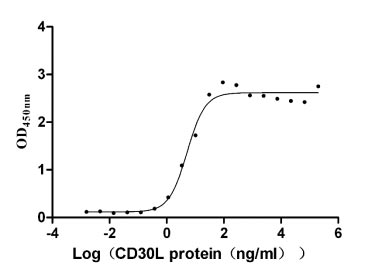
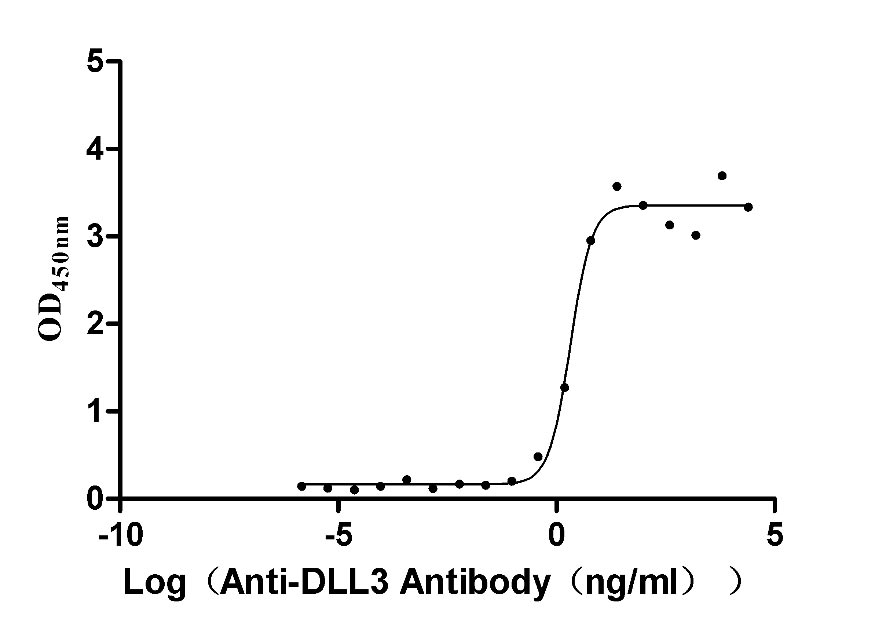
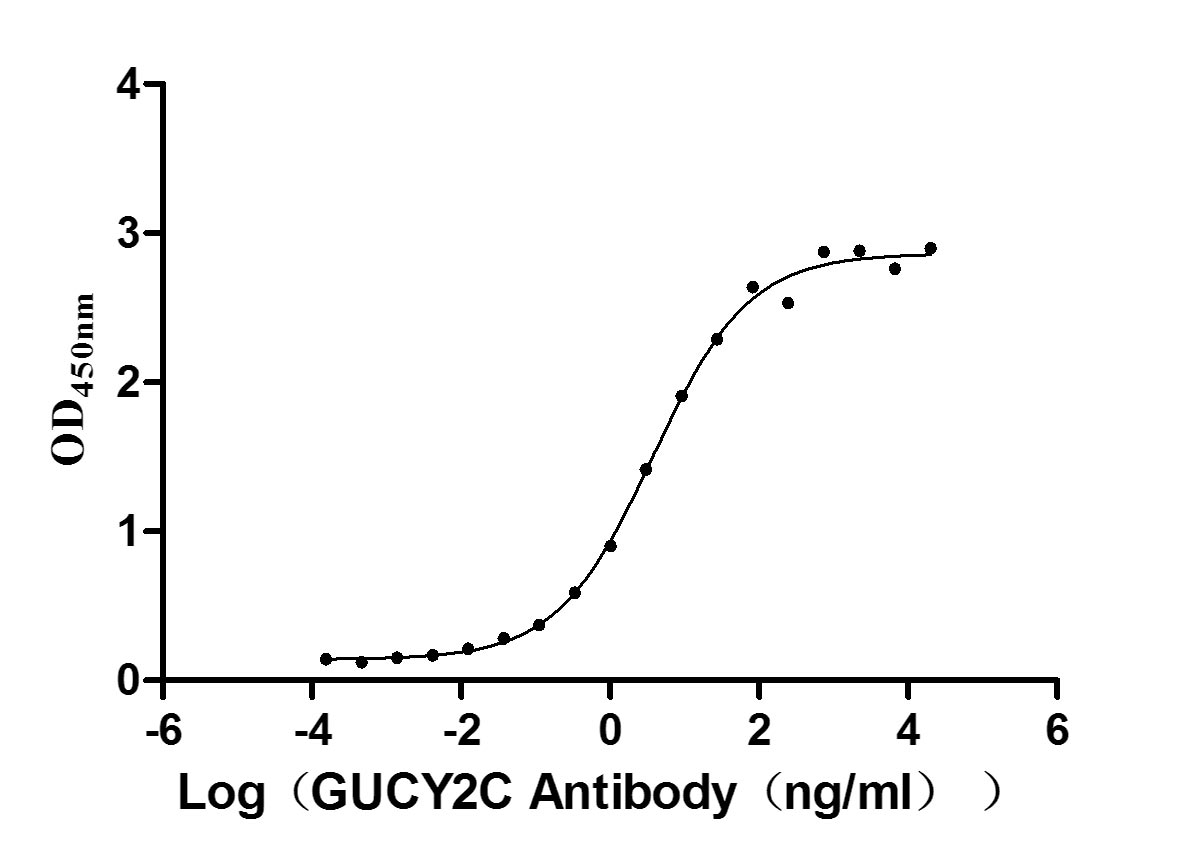
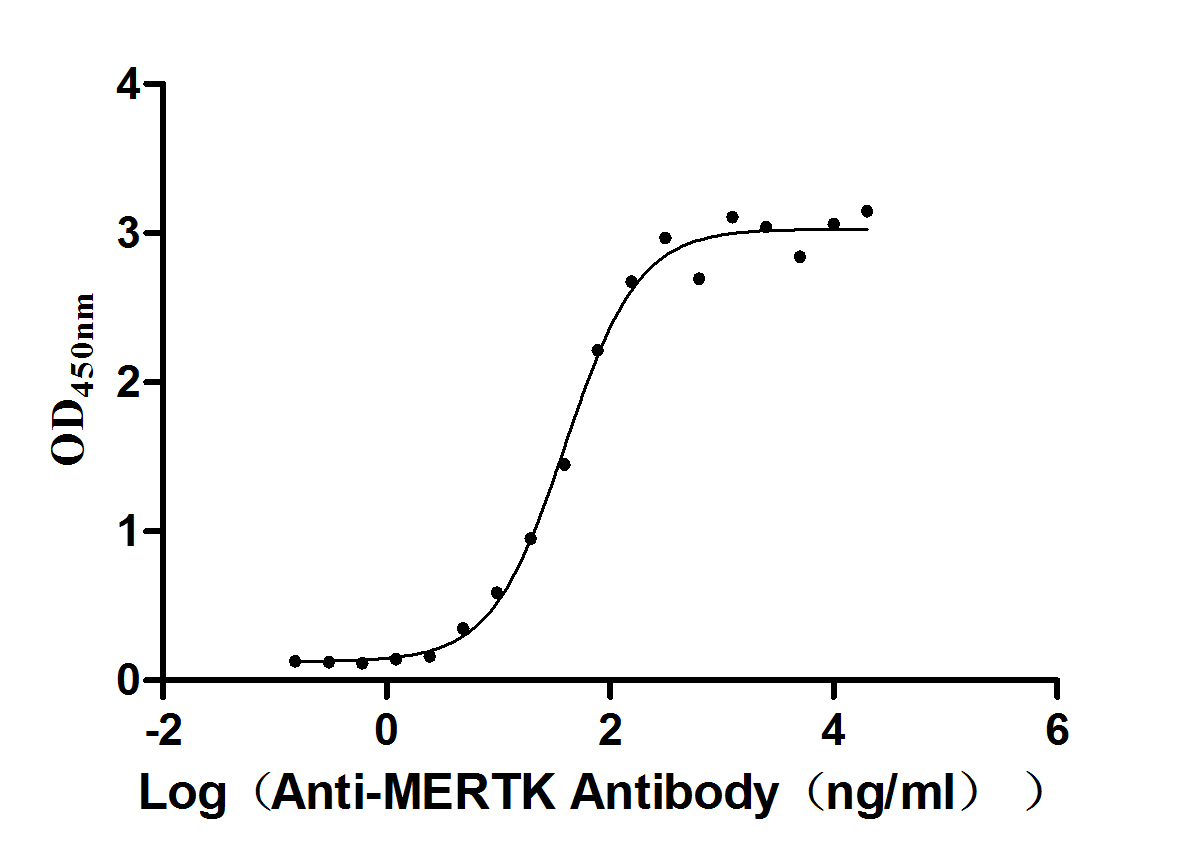
-AC1.jpg)
-AC1.jpg)
